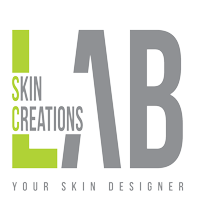3D WOUND HEALING
A LabSkin standardised and scaffold-free wound healing model
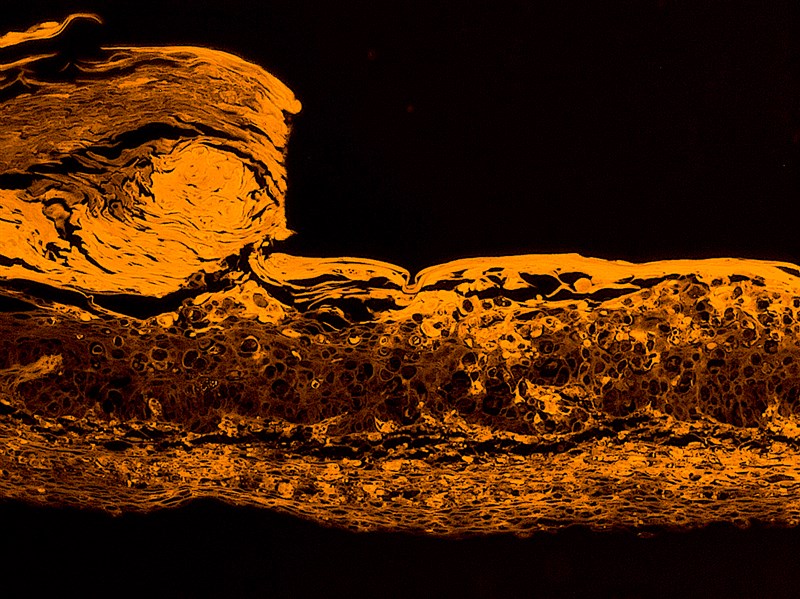
What is it About?
Wound healing is essential for the restoration of the barrier function of the skin.
Wound healing assays are usually performed in the conventional 2D cell monolayer format. It has become increasingly recognized, however, that the complexity of the wound healing process
is beyond what 2D cell culture is able to depict.
Hence, LabSkin Skin designers have developed a novel and highly reproducible 3D in vitro model to study the molecular mechanisms of wound repair, as well as in the investigation of potential therapeutics
and treatments for improved healing.
LabSkin healing model, a scaffold-free full-thickness injured model
LabSkin human wound healing model includes a scaffold-free dermal compartment to capture complex wound healing mechanics
like cell-matrix and cell-cell interactions in the healing process.
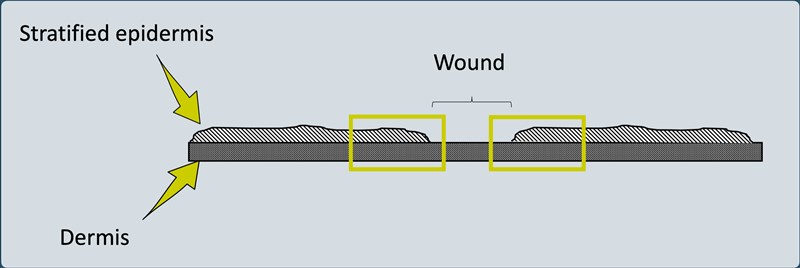
After the construct has matured, several forms of wounding can be carried out.

The lesions can range from small-scale epidermal-only injuries to full-skin wounds.
A functional 3D injured model healing in few days
During the process of healing, cells at the wound edges proliferate and migrate, leading to re-epithelialization of the wound surface.
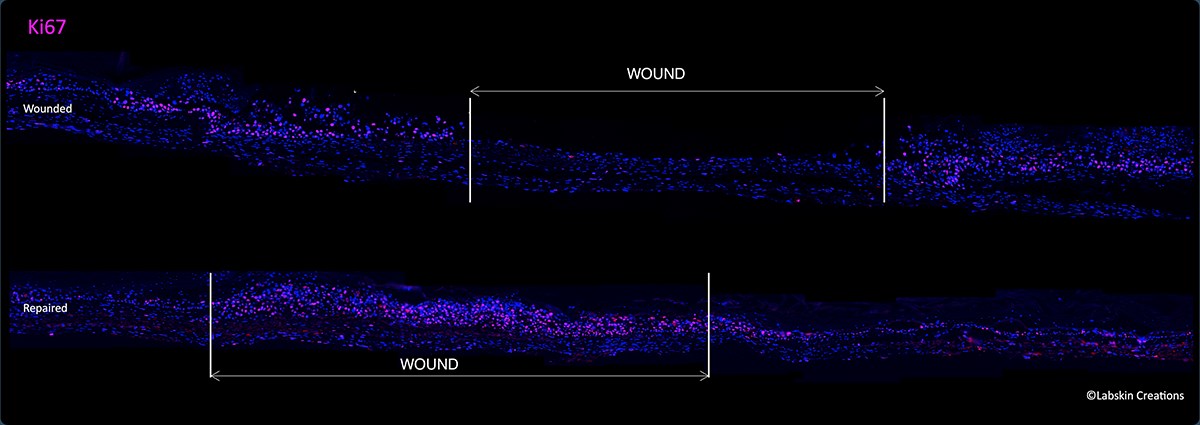
After 2 days, a small migrating tongue of collectively migrating keratinocytes is detected starting from the differentiated preexisting epithelium across the wound. Labskin construct is gradually covered by migrated cells started at the edges of the wound, moving toward the middle.
Generation of a de novo stratified epithelium across the entire construct is completed in 12 days.
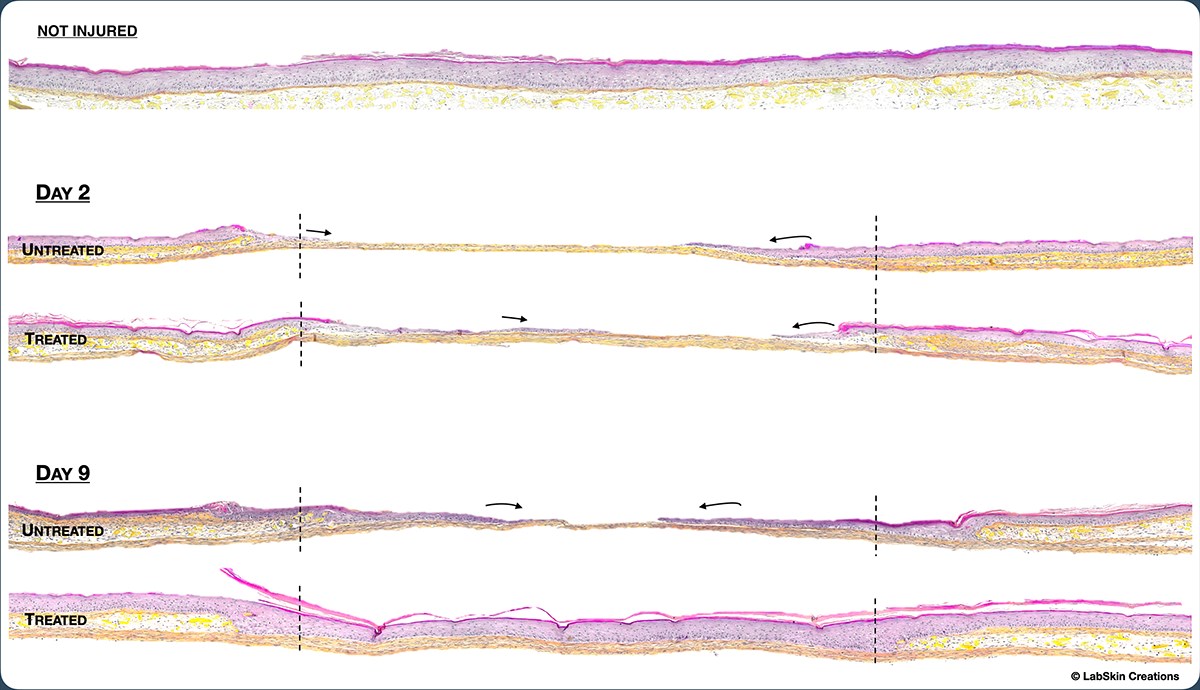
Topical application of healing stimulators significantly accelerates the healing process
proving the functionality of LabSkin wound healing 3D model.
LabSkin 3D WOUND HEALING model offers the best opportunity to understand the factors that influence wound healing, to capture complex wound healing mechanics like cell-matrix interactions and the interplay of different cell types in the healing process as well as to evaluate efficacy of treatments applied to wounds, thereby obviating the use of large numbers of experimental animals.

